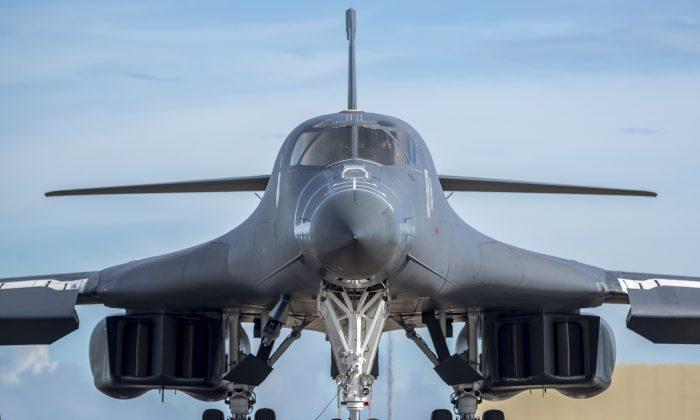The U.S. and Japan are brandishing their alliance—and military hardware—as both countries stare down North Korea’s nuclear threat and grapple with its long-standing ally, the Chinese communist regime.
With the Trump administration giving up hope China can rein in North Korea, there is renewed focus on cementing relationships with democratic allies in the region.
Those bombers took off from Andersen Air Force Base, in Guam, the U.S. territory that North Korea routinely threatens to bomb.
The next day, the United States and Japanese foreign affairs and defense ministers met in Washington to reaffirm the alliance. That included a statement reiterating that the United States backs Japan’s claim to the Senkaku Islands.
“The bonds of America and Japan have—forged over previous decades will continue to endure,” U.S. Secretary of State Rex Tillerson told reporters as Secretary of Defense James Mattis and their Japanese counterparts looked on.
The two countries were committed to confronting security threats in the region, he said, adding that North Korea was a major topic of their talks.
While Tillerson emphasized diplomatic and economic efforts to resolve the North Korean crisis, he said the two countries want to be prepared for military action.
“We all seek the complete, verifiable, and irreversible denuclearization of North Korea,” he said, calling on all nations to enforce U.N. Security Council sanctions on the North Korean regime.
“We will remain vigilant against the North Korean threats through our military preparedness,” he added.
Tillerson pledged the United States would honor its treaty agreements with Japan “without reservation.” Those agreements require the United States to defend Japan against territorial attack, which includes the Senkaku Islands.
He also pledged continued cooperation with other allies in the region, including the Republic of Korea, Australia, India, “and other southeast Asian countries.”
With tensions mounting, the United States and Japan are looking to deepen cooperation with South Korea, strengthening a trilateral alliance. The United States, and South Korea will begin a massive annual joint military exercise on Monday, Aug. 21.
Meanwhile, U.S. and Chinese military commanders met on Wednesday to ensure lines of communication are open, which would be important in the event of military action against North Korea.





